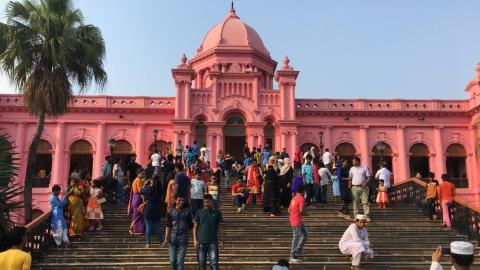Thailand
By Zara Stanhope
Artlines | 1-2018 | | Editor: Stephanie Kennard
Bangkok and Chiang Mai are the two main hubs for contemporary art in Thailand. Each has a distinct legacy, with Bangkok taking the lead in establishing art schools and national exhibitions in the 1930s and 40s.1 Since the late 1980s, Thai contemporary art has had a distinct identity and place on the international stage. However, Thailand has always lacked the public infrastructure to foster the presentation of contemporary practice, and support for visual artists is wanting. The country’s current political situation also places restrictions on artistic freedom of speech; artist-run and private galleries are subject to government surveillance and, at times, intervention. This makes for a fragile ecosystem in the visual arts, especially with the rise of public and private resources being directed at prioritising design and creative entrepreneurial initiatives.
The latest of these has been the rise of Charoen Krung Road and its surrounds as a creative area, particularly driven by the Thai Creative and Design Center (TCDC), located in a disused postal building. Promoted as a design area, the neighbourhood includes Warehouse 30, which houses a fashion store, event space, cafe and Documentary Club, with high-end jewellery and furniture design outlets nearby. This business initiative aims to attract local and international investment, and consequently, the cost of real estate will rise, which risks pushing out artists who previously were attracted to the area for its disused spaces. Using cafes or bars as exhibition spaces has been common in Thailand for several decades. Speedy Grandma is one such artist-run gallery and social space, bordering the Charoen Krung Road district.
Across town, affordable rents have been the catalyst for the siting of a small cluster of artist initiatives — Tentacles, Gallery Ver, Cartel, and the commercial space Artist + Run (operated by Angkrit Ajchariyasophon) — the exhibitions of which form a dynamic indicator of current practice. A recent independent initiative in central Bangkok is CityCity Gallery, which has the resources to host exhibitions, music gigs and film events as well as publish. The curated programs at Jim Thompson House by Gridthiya Gaweewong, and H Project Space (above H Gallery) by Brian Curtin, have also been important for giving a thoughtful context to local and international artists, just as artist Manit Sriwanichpoom’s private Kathmandu Photo Gallery continues his long-term advocacy for Thai photographers.

Bangkok CityCity Gallery, Bangkok / Image courtesy: Bangkok CityCity Gallery / Photograph: Spaceshift Studio
Chiang Mai has less exhibition infrastructure, but its art school continues to attract interesting practitioners as teachers, and to produce graduates with diverse practices. Kamin Lertchaiprasert is a senior artist who came to international attention in the late 1980s. Today, he continues to operate both his 31st Century Museum of Contemporary Spirit and The Land — a contemporary art project on the outskirts of the city, instigated with fellow artist Rikrit Tiravanija. These initiatives follow the socially engaged legacy established by the 1993 Chiang Mai Social Installation in public space, spearheaded by Uthit Atimana. Yet the development of arts infrastructure in Chiang Mai has been slow, with younger artists showing their work at artist-run spaces such as Gallery Seescape, run by Torlarp Larpjaroensook. Additional space for collaboration has been provided from external sources such as the Asian Culture Station, operated and funded by the Japan Foundation Asia Center with artist collective Chiang Mai Art Conversation.
In this context, the private art museum MAIIAM, which opened in Chiang Mai in 2016, is a keenly watched new initiative in the region. Situated in an elegantly converted industrial building just outside the city limits, MAIIAM was founded by Jean Michel Beurdeley, his late wife Patsri Bunnag, and his son Eric Bunnag Booth. The museum exhibits from the family’s collection of contemporary Thai art, which is important for its representation of works from the late 1980s onwards, especially from Chiang Mai artists. The associated exhibition program and publications are significant, having included reviews of works by Kamin Lertchaiprasert and filmmaker Apichatpong Weerasethakul, as well as an extraordinary exhibition of art from southern Thailand by artists engaging with the Muslim population. Initiatives in the form of MAIIAM, and the forthcoming inaugural Bangkok Art Biennale, Bangkok Biennial, and Thailand Biennale in 2018, offer new opportunities to see the depth and breadth of contemporary art in this country.
Zara Stanhope, former Curatorial Manager, Asian and Pacific Art, QAGOMA.
Endnote
- The first art school established in Thailand in 1933 became part of Silpakorn University, which also established a university art gallery in 1957. The first private art gallery, Bangkok Art Centre, opened in 1960.

